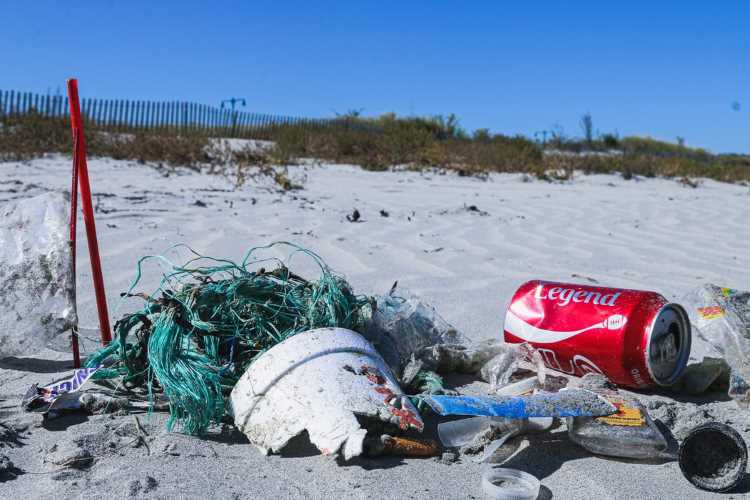
Marine plastic pollution: The menace of plastic pollution is getting harder to tackle by the day. More than 171 trillion pieces of plastic are floating in the world’s oceans, according to a study published in the journal PloS One. The study paints a grimmer picture of plastics pollution menace, saying there is much more microplastics in the oceans than previously thought.
A team of scientists from the 5 Gyres Institute analysed the records between 1979 and 2019 from around 12,000 points in the Pacific, Atlantic, and Indian oceans as well as from the Mediterranean Sea. They found that the ocean plastic pollution has grown at an unprecedented rate since 2005. In less than a decade, plastic pollution has jumped from an estimated 5 trillion tonnes in 2014 to 171 trillion pieces at present. Scientists have warned that without immediate policy action, the rate at which plastics enter the oceans could increase 2.6 times by 2040.
READ | US-India trade potential largely untapped despite chip deal
Less than a tenth of global plastics are recycled each year, Lisa Erdle, director of research and innovation at the 5 Gyres Institute and an author of the report said. The problem is that once plastic enters the marine ecosystem, instead of getting decomposed, it tends to break down into tiny pieces. Scientists are now calling this problem a plastic smog which can be best described as a layer that is covering the entire surface of the ocean.
What are microplastics
Microplastics are small plastic particles that are less than 5mm in size. These particles are created when larger plastic items, such as bottles and bags, break down into smaller pieces over time. The presence of microplastics in the ocean is a big problem for several reasons. For one, these particles can be mistaken for food by marine wildlife such as fish, birds, and turtles, which can cause physical harm to the animals and disrupt their digestive systems, leading to starvation or death.
Moreover, these particles have been found to accumulate in the tissues of marine animals, which can then be consumed by larger animals, including humans. This can lead to the transfer of harmful chemicals and toxins up the food chain. Overall, microplastics can also contribute to overall pollution of the ocean and coastal ecosystems.
They can affect water quality, alter the chemical makeup of seawater, and impact the health of marine habitats. Not only do microplastics pose ecological harm but can also have major economic impact. Industries that rely on the ocean such as tourism and fisheries may find themselves at risk due to the presence of microplastics.
Climatic impact of marine plastic pollution
The climatic effects of microplastics in the ocean are still being studied, but there are several potential ways in which microplastics impact the climate such as affecting the carbon cycle by interacting with microorganisms that play a critical role in carbon storage and cycling in the ocean. The presence of microplastics can alter the microbial community, potentially leading to disruptions in the carbon cycle.
Microplastics in the ocean are also found to absorb sunlight and increase the temperature of the surrounding water. This can have a localised impact on the environment, potentially leading to changes in the ocean currents and weather patterns. Some studies also suggest that microplastics can promote the growth of methane-producing bacteria, which can lead to the production of potent greenhouse gas. Further research is needed to better understand these effects and develop strategies to mitigate the negative impacts of microplastic pollution.
The problem of microplastics in the ocean is a significant concern that requires collective action to reduce the amount of plastic waste entering our oceans and find effective ways to clean up existing plastic pollution. The most obvious way to control plastic pollution in the oceans is to prevent it from entering in the first place. This can be done by reducing the amount of plastic waste generated through measures such as recycling, waste reduction, and sustainable production practices.
However, the scientists who conducted the study are of the opinion that we are past the recycling stage. In fact, a better way to bell the cat is by stopping the production of plastic at current rates otherwise clean-up of existing plastic is futile. The plastic industry must also look into honouring any commitments to buy recycled material or design for recyclability to make any dent in taming pollution, lead author Marcus Eriksen from the 5 Gyres Institute said. Restoration of marine habitats such as coral reefs, mangroves, and seagrasses can also help to create healthy ecosystems that can naturally filter out plastic pollution.
